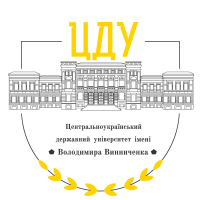FEMININITIES IN THE UKRAINIAN LANGUAGE AS REFLECTION OF CONTEMPORARY SOCIAL CHALLENGES
DOI:
https://doi.org/10.32782/2522-4077-2024-208-7Keywords:
femininity, word-formation processes, mass media, stylistic differentiation, lexicography, speech practiceAbstract
Any social changes occurring in society affect language, indicating its dynamism and social sensitivity. Language is a system that is constantly undergoing changes, continuously modifying itself, and reacting promptly to the needs of society, adjusting accordingly. The increasing number of borrowed words and neologisms in our language, allowing us to denote new phenomena and objects when needed is the evidence of this. Such changes also lead to an increase in the use of femininities in contemporary language. Femininities are characteristic of the Ukrainian language as a system, and their usage follows certain patterns. It is not merely a trend as is often believed. The process of incorporating femininities into our everyday language is complex and ambiguous, sparking lively discussions among linguists and those less familiar with linguistic studies. Therefore, societal attitudes towards femininities and their usage in both spoken and written language are ambiguous. Nevertheless, linguists provide substantial linguistic arguments in favor of using femininities, emphasizing that in the Ukrainian language, femininities have existed for a long time – they are present in B. Hrinchenko's Dictionary and the «Dictionary of the Ukrainian Language» in 11 volumes, dating back to the early 20th century. Hence, the relevance of this issue is increased. Femininities are words of the feminine gender, alternative or paired counterparts to analogous concepts of the masculine gender (which are typically used for all people regardless of their gender): actor – actress. Transformational processes associated with democratization and social developmentare accompanied by the necessity to form a gender culture, which involves the awareness of equality between men and women and the strengthening of women's roles in social life. The active creation and use of femininities in the modern stage represent the restoration of a specific linguistic feature. General designations for individuals of both male and female genders are the most active and dynamic category of words in the Ukrainian language. It develops rapidly, continuously, and progressively, being highly dependent on extra linguistic factors. In the current stage of social and linguistic progress, the category of femininity is in a state of active development. However, more often, they appear in spoken language (announcers, event hosts) and in mass media.
References
Брус М.П. Словник фемінітивів як спроба упорядкування мови Леся Мартовича. Прикарпатський вісник НТШ. Слово. Івано-Франківськ. 2019. № 2(54). С. 52–53.
Брус М. П. Фемінітиви української мови в переплетінні давніх і сучасних тенденцій. Вісник Львівського університету. Львів: Львів. нац. ун-т ім. І. Франка. 2009. С. 61–69.
Гінзбург М. Д. Ґендерні особливості української мови, на які треба зважати. Українознавчий альманах. 2012. Вип. 9. С. 75–83.
Литовченко І.В. Особливості сучасних засобів масової інформації як соціального інституту інформаційного суспільства. Вісник Національного авіаційного університету. 2014. № 1. С. 37–40.
Малахова О.М. Фемінітиви – не данина моді, вони властиві українській мові як системі. URL: https://womo.ua/olena-malahova/
Словотвір сучасної української літературної мови /за ред. М. А. Жовтобрюха. Київ: Наукова думка, 1979. 406 с.
Шевченко З. В. Словник ґендерних термінів. Черкаси, 2016. 336 с.
Шкуратяна Н.Г., Шевчук С.В. Сучасна українська літературна мова: Модульний курс: навчальний посібник. Київ: Вища школа, 2007. 823 с.








